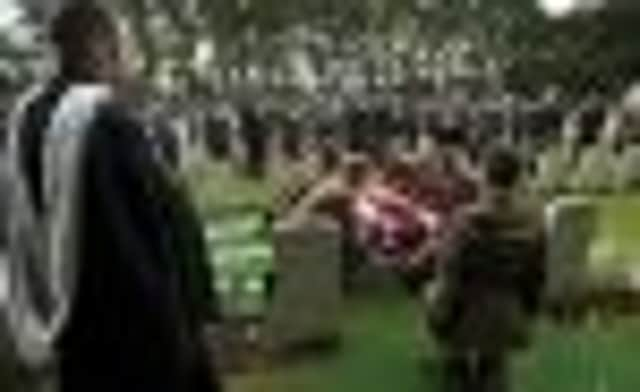Second World War hero finally laid to rest in Netherlands after 68 years


The funeral of Private Lewis Curtis, from Liskeard in Cornwall, who served with 5th Battalion The Wiltshire Regiment, took place in Oosterbeek. His family, including Private Curtis’ great nephew Richards Edwards who has just returned from Afghanistan with his battalion 5 Rifles, all attended the ceremony. 5 Rifles are The Wiltshire Regiment’s successors.
Private Curtis, who survived the Normandy landings, was just 19 years old when he was killed by an artillery barrage during Operation Market Garden on the 2 October, 1944.
Advertisement
Hide AdAdvertisement
Hide AdHe was buried in a shallow grave where he fell. But the markers for the plot at De Laar Farm were washed away when German military engineers flooded the area, and his burial site was lost to his family who believed he had died in Belgium.


In 2003, almost 60 years after his death, his remains were unearthed by builders excavating the old Dutch battlefield. Since then, a Dutch forensic team has been using scientific tests including DNA analysis to try and discover who he was. Only after dental records were uncovered in 2008 did the young soldier’s true identity come to light. The lengthy process to confirm remains is not uncommon.
“It can take anything from three days to seven years to be able to identify remains because it’s important to get it right for the next of kin,” said warrant officer class 1 Geert Jonker, the head of the recovery and identification unit for the Royal Netherlands Army. “So when we can make a positive identification it makes all those years of research worthwhile. It’s the ultimate reward, but sometimes it is about luck.
“In this case it was only because we went for a second opinion on the age of the soldier that told us he was a lot younger than we originally thought. Lewis had an undiscovered growth defect that would not have caused him any problems but made his remains seem older than his 19 years. Based on that information, we had seven new names we were considering, three of whom had dental records. One of which was Lewis, who was a perfect match.”
The discovery was too late for the sister of Private Curtis, Alice, but her children Susan Wilbourne and Robert Cole, who still live in Liskeard and grew up with tales of their Uncle, flew to the Netherlands for the burial at the Arnhem-Oosterbeek war cemetery.
Yesterday Susan Wilbourne said: “Mum was always talking about Lewis, so it’s unbelievable to be here now to finally lay him to rest after so long of not knowing. It’s been quite an emotional roller coaster since we found out. It is just such a pity that mum couldn’t be here to bury her little brother, but I can feel her here. She was always very close to Lewis.”
To this day, 18 soldiers of the old Wiltshire Regiment remain unaccounted for.